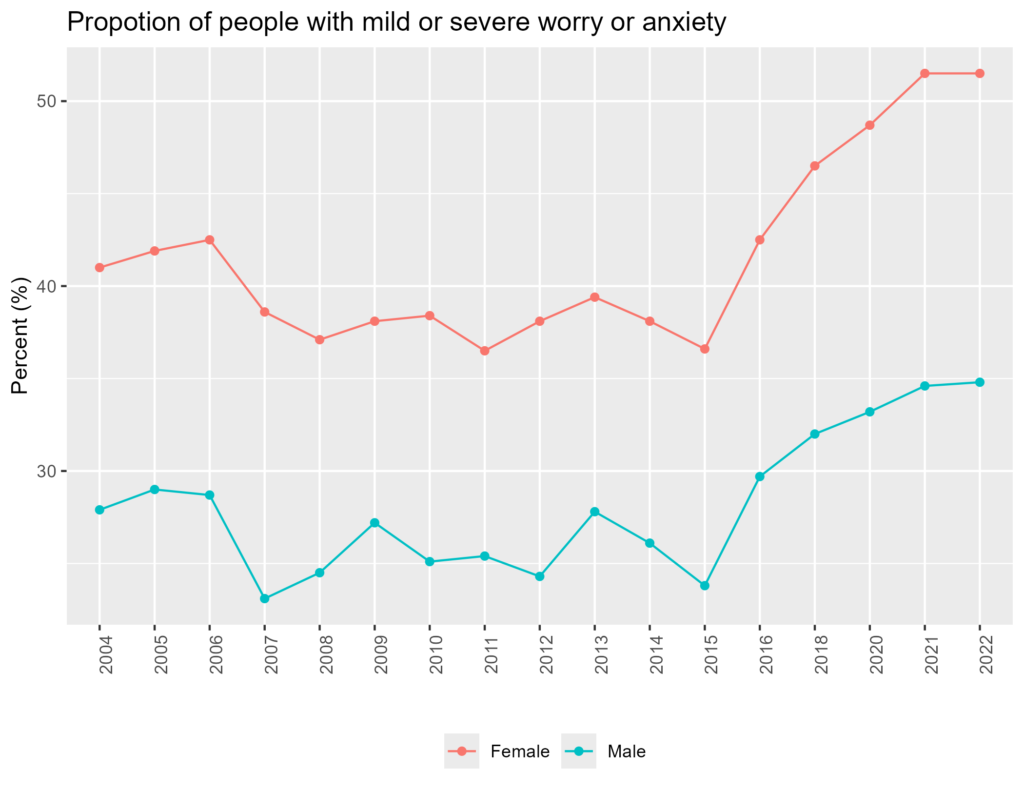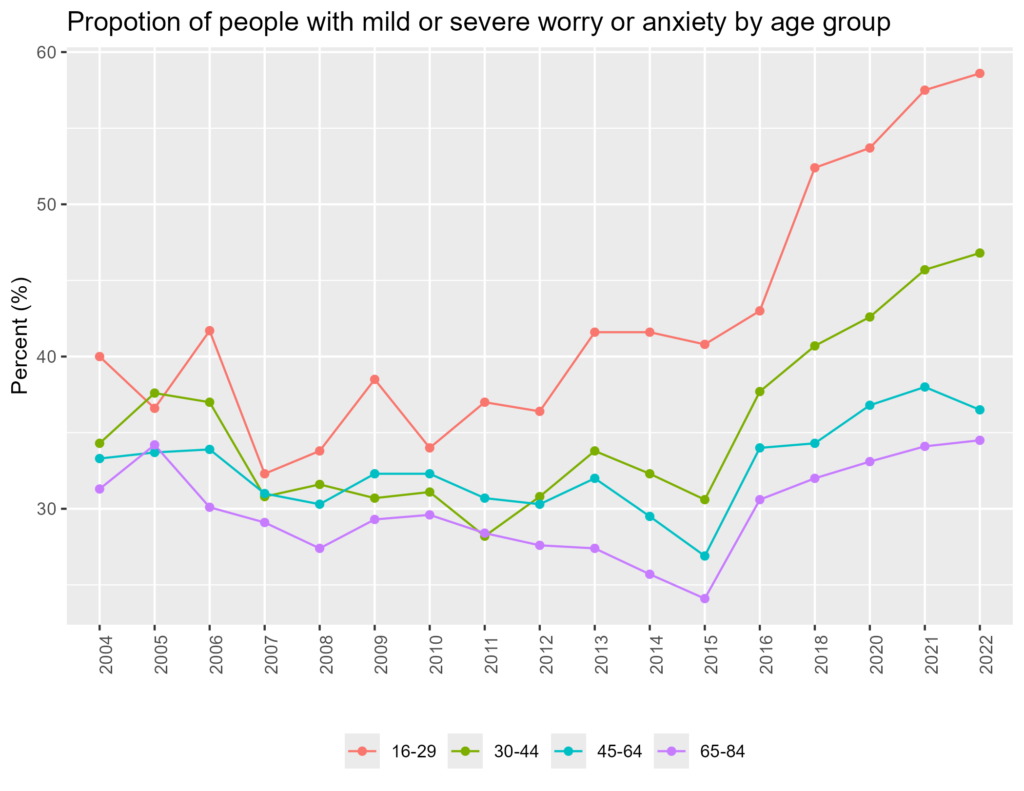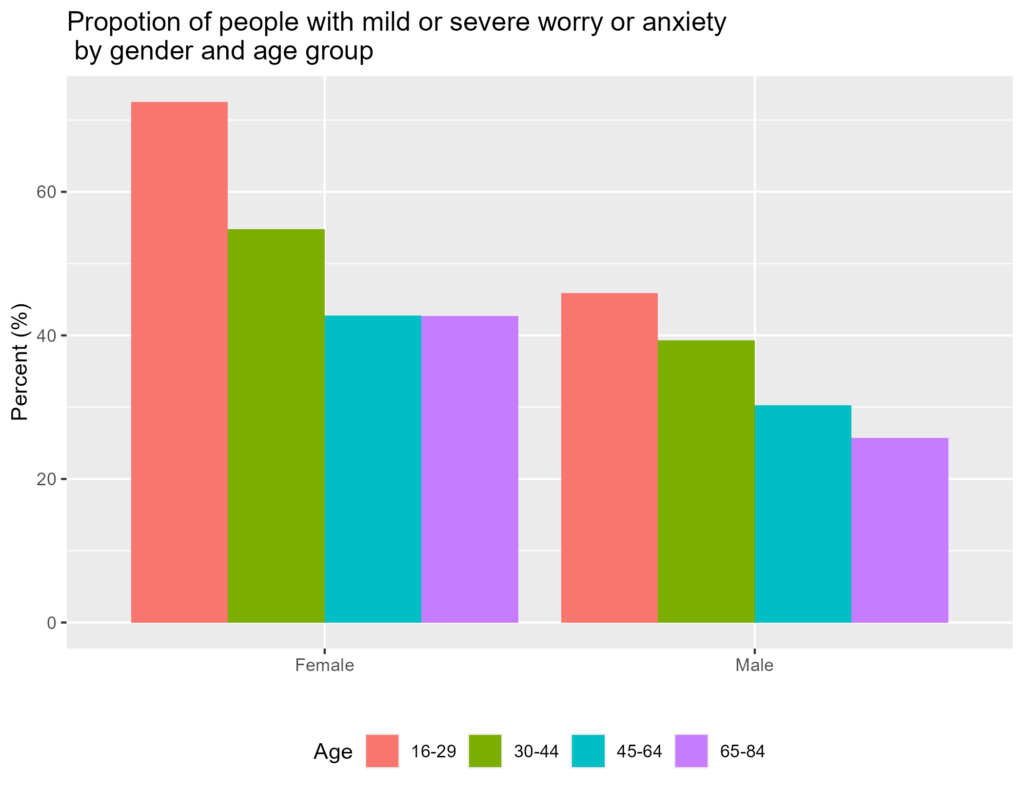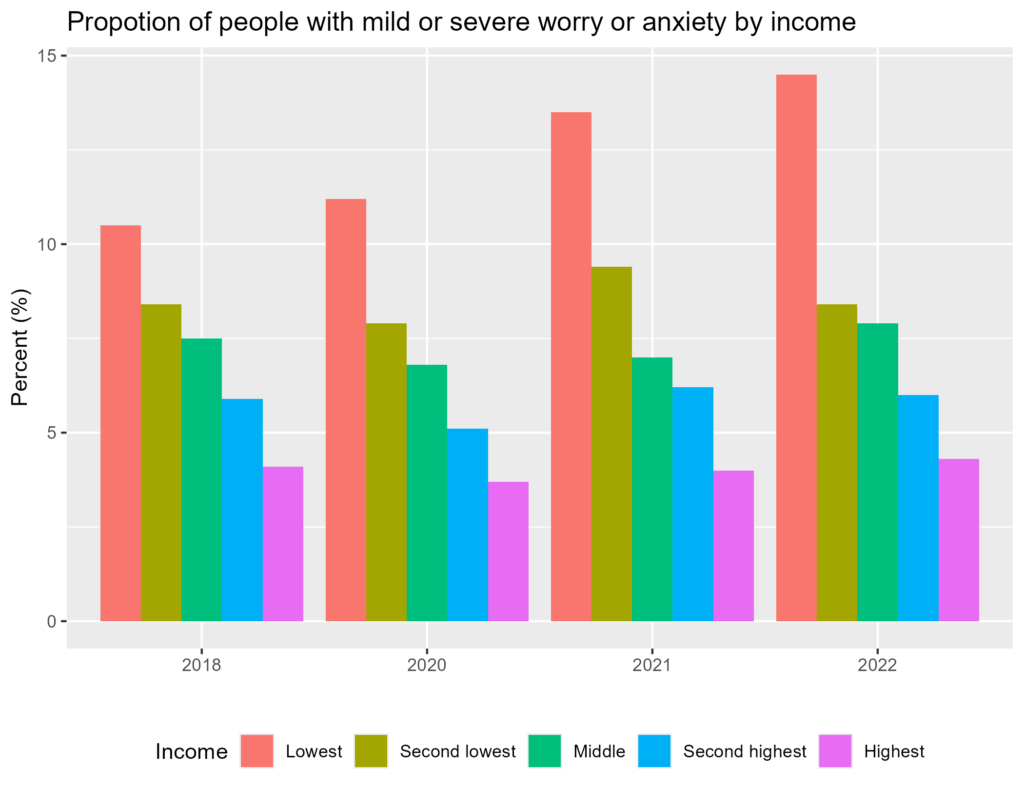Mental health problems, especially anxiety and depressive disorders, are prevailing across the globe. As of 2019, 1 in every 8 people is living with mental disorders (1). I often hear that mental disorders are increasing in Sweden, especially among young women. That could be due to more stressful and demanding lifestyles from the urge to share and browse information on social media. That could also be due to the change in public awareness towards mental disorders. We are now well aware that mental disorders should be treated or prevented, and therefore, we talk about them more openly than before. The National Public Health survey (HLV) in Sweden asked questions regarding worry or anxiety as follows (2).
Q: “Do you have any of the following problems or symptoms? – Worry or anxiety?”
A: “No”, “Yes, mild problems”, “Yes, severe problems”
The chart below shows the percentage of people aged 16-84 who answered mild or severe worry or anxiety. We could see more females report worry and anxiety than males in all years. We could also see an increasing trend, especially since 2016 for both males and females.

If we look at it by age groups, a much higher proportion can be seen among the youngest age group: 16-29 years old. In 2022, it reached almost 60 %.

Seeing that by sex for the specific year 2022, more than 70% of 16-29 years old females reported worry or anxiety.

Data show that mental disorders, worry or anxiety have increased in Sweden over the decade. Especially, it seemed more pronounced among young women: 16-29 years old females. These support what I hear but still, it is uncertain why that is happening. Biologically, women are more susceptible to develop mental disorders than men (4). The increasing trend of worry or anxiety is seen in both men and women and older age groups although it is more prominent in young aged women. There must be some causes that affect the whole population such as negative perspectives towards the world due to climate change, wars, and pandemics, or changes in employment situations.
The last chart shows the percentage of people who answered with “severe” worry or anxiety by income level. There is a clear gradient from the lowest to the highest level of income. In Sweden, and probably in other countries as well, immigrants and people with low education are often challenged to attain high incomes. Therefore, the chart could indicate that severe worry or anxiety is more common among socially disadvantaged populations; low income, immigrants, and low education.

Even though the specific cause for the increasing mental disorders is uncertain, we could grasp a few ideas from these data. First, it is more prevalent among young women, as I heard. However, an increasing trend of worry or anxiety seems common across all age groups and sex. In addition, it seems more common among people with low income, and there is a clear gradient.
References
- World Health Organization. Mental disorders [Internet]. 2022 [cited 2023 Aug 5]. Available from: https://www.who.int/news-room/fact-sheets/detail/mental-disorders
- Folkhälsomyndigheten. Nationella folkhälsoenkäten – Hälsa på lika villkor [Internet]. 2023 [cited 2023 Jul 19]. Available from: https://www.folkhalsomyndigheten.se/folkhalsorapportering-statistik/om-vara-datainsamlingar/nationella-folkhalsoenkaten/
- Folkhälsomyndigheten. Folkhälsodata. [cited 2024 May 26]. Mental health (self-reported) by age, sex and year. Percentage. Available from: http://fohm-app.folkhalsomyndigheten.se/FolkhalsodataFolkhalsodata/pxweb/en/A_Folkhalsodata/A_Folkhalsodata__B_HLV__dPsykhals/hlv1psyaald.px/
- Riecher-Rössler A. Sex and gender differences in mental disorders. Lancet Psychiatry. 2017 Jan 1;4(1):8–9.
- Folkhälsomyndigheten. Folkhälsodata. [cited 2024 May 26]. Mental health (self-reported) by financial situation, sex and year. Percentage. Available from: http://fohm-app.folkhalsomyndigheten.se/FolkhalsodataFolkhalsodata/pxweb/en/A_Folkhalsodata/A_Folkhalsodata__B_HLV__dPsykhals/hlv1psybeko.px/
